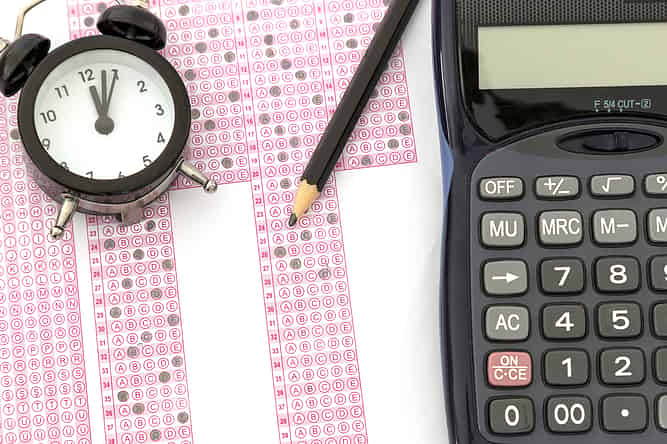
By Priyam, IvyWise Master Tutor
Taking the ACT this fall? There are a number of formulas that students should know before sitting for the test, and many can be programmed into students’ calculators beforehand in order to save time and give students’ the best chance of completing the math section in time and to the best of their ability.
There are a lot of math concepts tested on the ACT and the ACT does not provide students with any formulas on a reference sheet. However, all the formulas and math knowledge for the ACT come from what students have learned and memorized in their high school math classes, so the formulas that show up on the test the most will likely be the most familiar to students. It’s the formulas that are only needed for one or two questions on the test that may be less familiar to test-takers. For example, the equation of a circle and logarithm formulas only show up once on most ACT Math sections. If you’re aiming for every point possible, go ahead and memorize them, but if you feel overwhelmed with formula lists, take comfort in knowing you likely won’t be tested on the more esoteric formulas.
For students preparing for the ACT this fall, here are the ACT formulas students must absolutely know before test day:
Algebra
- Linear Equations & Functions
- Slope: (rise/run, Δy/Δx)
- Slope-Intercept Form: (y =mx+b) In this formula m is the slope and b is the y-intercept (the point of the line that crosses the y-axis)
- Midpoint Formula: [(x1 + x2)/2, (y1 + y2)/2]
- Distance Formula: √[(x2 – x1)^2 + (y2 – y1)^2] This formula is helpful to know but you don’t actually need it, as you can simply graph your points and then create a right triangle from them. The distance will be the hypotenuse, which you can find via the Pythagorean theorem.
- Logarithms:
- Log_bxy = log_bx + log_by
- Log_b{x/y} = log_bx – log_by
Statistics and Probability
- Average and mean, keeping in mind that average is the same thing as the mean.
- Mean: {sum of the terms} / {the number of different terms}
- Average speed: {total distance} / {total time}
- Probability: A representation of the odds of something happening. A probability of 1 is guaranteed to happen. A probability of 0 will never happen.
- Probability of an outcome happening: {number of desired outcomes} / {total number of possible outcomes}
- Probability of two, mutually exclusive, outcomes both happening: Probability of event A x Probability of event B
Geometry
- Rectangles
- Area: lw (l is the length of the rectangle and w is the width of the rectangle)
- Perimeter: 2l+2w
- Volume: lwh a (h is the height of the figure)
- Triangles
- Area: {1/2}bh where b is the length of the base of triangle (the edge of one side) and h is the height of the triangle
- Pythagorean Theorem: a^2 + b^2 = c^2
- Special Triangles: 45 : 45 : 90 (x : x : x√2), 30 : 60 : 90 (x : x√3 : 2x)
- Trapezoids
- Area: [parallel side a + parallel side b)/2]h
- Circles
- Area: πr^2 (π is 3.1415926….., r is the radius)
- Area of a Sector: (πr^2)(degree measure of center of arc/360)
- Circumference: 2πr = πd (d is the diameter)
- Length of an Arc: (2πr)(degree measure center of arc/360)
- Equation of a Circle: (x – h)^2 + (y – k)^2 = r^2 where (h,k) are the center of the circle
- Cylinder
- Volume: πr^2h
Trigonometry
- SOH CAH TOA: sin = opposite/hypotenuse, cos = adjacent/hypotenuse, tan = opposite/adjacent
- Trigonometry is a subject governed by formulas that explain the relationships between the angles in a triangles, best memorized via that acronym.
Programming Calculators
If you feel that remembering the above list of formulas is next to impossible for you, then it may be to your advantage to get TI-83/84/85 programs that you can enter into your calculator for the ACT Math section. Remember that the TI-89 is not allowed on the ACT, because of its CAS (computer algebra system) functionality! It’s perfectly okay to use programs on your TI-83/84/85, however, because these calculators lack CAS capability. There is a little-known rule buried in the FAQ and Help section of the ACT website that the calculator program “must not have more than 25 lines of logical text” and “must not call on any other programs.” Due to the fact that few test-takers and proctors are aware of this rule, it is unclear whether this restriction will be strictly enforced. Entering all the above programs into your calculator is quite easy and can even be downloaded from the internet or you can program them into your calculator yourself.
Of course, memorizing a list of formulas and programming them into your calculator won’t be very helpful if you don’t know how to use them on test day. It’s critical for students to come up with a test prep plan far in advance of their target test day and subsequently track their progress via practice tests. At IvyWise, our team of expert tutors work with students to help them identify their best-fit test, creating a test prep plan, and set realistic goal scores. Contact us today for more information on our SAT and ACT test prep services.
Want to see how our tutors work with students? Watch our free demo below.


